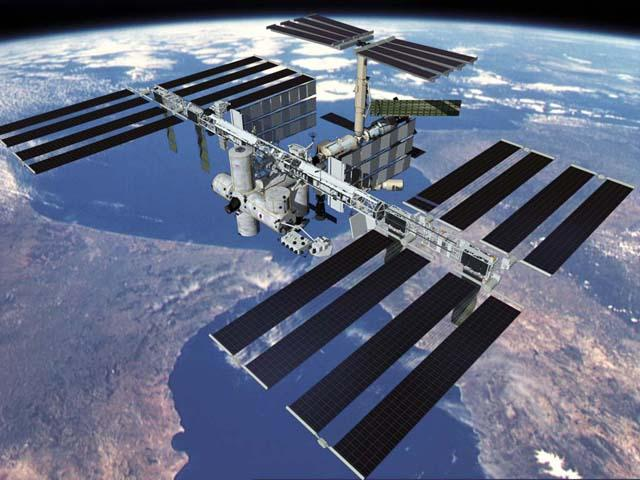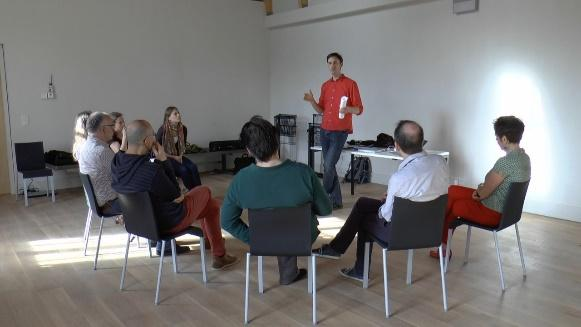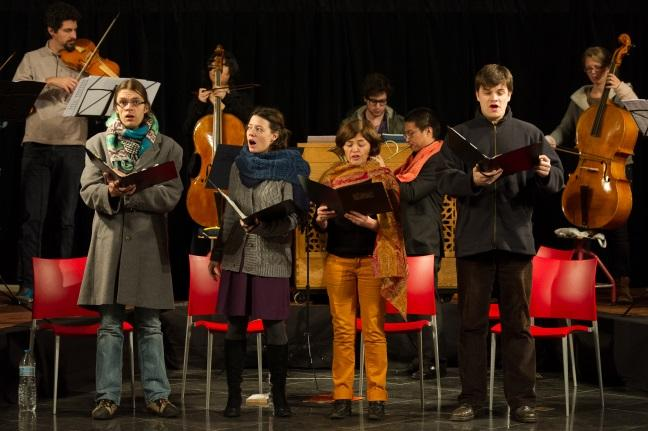AR is a relatively young phenomenon, and it is understandable that until now great attention has been paid to its formats, quality standards and the positioning of AR among other forms of research. However, we are at a point where we have to step beyond self-definitions and look critically at the role that AR may fulfill in global culture. Can we relate the activities that take place under the umbrella of AR to what is happening around us in culture, in society? Assuming that AR is rooted in artistic practice, can we recognize the newest evolutions in art and culture in the current research proposals and projects?
From output to impact
The title of this seminar suggests something coming from outer space, like a meteor entering earth’s atmosphere. Something that has already weight and mass and is only waiting to be projected towards the Earth at the right moment, with the right speed and in the right direction, where the meteor is a metaphor for a research outcome and the Earth for culture. An image suggesting a kind of 19th-century autonomy of the artist-researcher whose creations only need the right communication channels or translation tools to have a real impact on culture.
Let us stick to that metaphor: if you are an outsider, you have to be lucky to be looking at the sky at the right moment, to see the meteor lighting up for a few seconds. Most of the meteors entering the atmosphere remain unnoticed, and luckily there is almost no chance that they will have a real impact on your life. This is a situation that applies to most kinds of specialised research output: it makes some light and noise at the moment of presentation, mostly for people who already know beforehand where and when to look in the sky. But in most cases, the biggest impact on culture is that the researcher gets a degree and eventually an academic position.
If we want to increase impact possibilities for AR, we cannot wait for the output to start thinking about dissemination. We have to reflect upon what happens before: the way the research is carried out, facilitated, embedded in a larger context. We may even have to reflect on the kind of research questions and topics that are considered relevant.
For this reason I would like to create an inverted perspective, not starting from an AR output searching to be disseminated, but the other way round: let us first look to the place where we want to create impact, and then do a kind of reverse engineering: what kind of research project is necessary to have an impact at a certain place or level, and what kind of research questions are necessary to generate such an AR?
Philea landing on comet 67P
Musica is a Flemish arts organization, active in the field of non-formal music education.
The musical scope of the organization is very broad, going from historical to contemporary music, from improvisation to sound art. The organization hosts a large collection of sound art installations in the open air, which is unique in Europe. Its audience and target groups are diverse: activities in schools, training programs for teachers, talent development programs and projects for a wider audience. The organization aims to stimulate musical culture by setting up specific experiments, community art projects, alternative music festivals and talent development programmes. In doing so, it relies on partnerships with arts and cultural organizations, universities, conservatories and music schools.
CONNECT: a development series for part-time music education
This is an example of a research project where scientists did not wait to receive input coming from the outside, but sent out a missile with a clear target to do research somewhere else. It is a research project with general learning objectives and a very unpredictable outcome, but with a well-defined landing place and a clear method to make it happen.
Of course, a comparison with AR is hard to make, since very often there are no clear targets in AR, only discovery-led processes. However, what we can learn from such projects is that the definition of place and context for research is crucial for attracting attention, generating enthusiasm and creating shared involvement. The question of where to land seems to be left out of consideration in too many artistic research proposals.
Where can impact happen?
-Individual practice
The easiest claim is that AR changes or transforms the practice of the artist-researchers themselves. There is a lot of opposition from other fields of research to this type of outcome. The biggest critique is that AR results are sometimes no more than diaries of practices with a personal conclusion. Very interesting for the individual artist, but not what can be expected from third cycle studies.
-Research community
A more substantial form of impact is becoming visible today. There is a growing community of artist researchers who share newly gained knowledge and understanding. Step by step, AR can rely on a growing body of research output, but also on a community that can cross-fertilize research and afford peer review. However, caution is necessary here. For as long as the exchange within the AR community does not lead to real transformations of practice beyond that community, there is a real danger of a closed circuit of AR coming into being, without having real relevance for global culture.
-Professional networks
A problem related to that issue is that most of the people who have completed AR today already had a professional career as an artist when they started doing research. They were connected to ensembles or concert houses. They could rely on their personal, professional network to experiment and disseminate their research. Their network in its turn could defend engagement with the research as an investment in innovation.
Unfortunately, public support for many of these networks is decreasing rapidly. There are very few places left where you can still present innovative work that is not primarily made with the judgment of the public in mind. AR can function here as a kind of shelter, a place where innovation and specialization is still possible. On the other hand, if we claim that AR is rooted in practice, and if that practice does not really exists beyond AR, then we may have a credibility problem. What if the most talented students at the conservatory, after finishing their masters, see no other solution than immediately to embark on a third cycle? The danger of a disconnection with global culture is no empty threat.
-Translation efforts
Therefore, in terms of valorisation, it may be interesting to focus research output partly on those conservatory students who do not have research ambitions themselves. From their perspective, many of the current AR topics are far from daily musical practice. They may contain useful elements for music education, creation or concert practice, but the mere selection of what is immediately useful or not needs considerable time and energy.
Can we imagine a research context where valorisation and translation efforts are taken into account from the beginning? I will give an example of a recent project by Musica, Impulse Centre for Music that may provide an answer to how this could happen.
Musica, Impulse Centre for Music
The first project in the series is a good example of valorising the outcomes of recent historical and practice-based research, more specifically the research of Sanguinetti (2012) & Gjerdingen (2007). Their research into the Napolitan partimento tradition shed new light on the productivity of composers in the 18th and 19th century and on the way they learnt to ‘speak music’. The research suggests a hands-on and more horizontal approach to harmony, in contrast to the functional harmony that is still taught in music schools today. These insights are very much of use to classical music education, where a real need has existed for a long time for a more implicit and aural learning approach to internalize musical logic in a non-theoretical way.
-Music teachers as ambassadors
12 piano and organ teachers from 12 different music schools were invited to engage actively in the project. They attended five master classes with international experts on historical and contemporary improvisation practices. A teacher/author was engaged to use the input of these experts and his own experience to develop material that could be used in daily classroom practice. The teachers went home with this material and started to experiment and test it out in their own teaching practice.
-Tonal Tools: connecting musical traditions with creative practice
Based on feedback from the teachers and comments from the experts, a toolbox was created for aural improvising and composing at the keyboard, starting from existing and tonal musical idioms (the kind of music that is very present in music schools). The toolbox finally became a bilingual publication, along with a website and an application to be used in the classroom.
-Matching research outcomes with actual needs
Part of the success of the project can be explained by the match between the project output and an actual need for reforms in music education. At the end of next year, a substantial proportion of the keyboard teachers in Flanders will have been reached through the publications and accompanying courses.
-Maximal return on investment
The project structure, with input from researchers and experts, the formula with teacher-ambassadors, an experimental phase with feedback from the bottom up and finally the publication of a toolbox, website and application, enables maximal dissemination and lasting impact.
Connect II: Inner voicing, distant touch
The majority of musicians in Flanders have their initial training in music schools belonging to what we call ‘part-time art education’, the official state-subsidized music schools that provide non-compulsory arts education to children and adults. Part-time music education is also the top employer for professional musicians in Flanders. With the Connect series, Musica aims to inspire their practice by connecting what they have been taught at the conservatory with new evolutions and insights coming from current research and artistic developments.
Connect I: From Partimento to Lead Sheet
The next series of the CONNECT programme addresses teachers of melody instruments and singers. The approach is similar to the first series: a connection of historical and contemporary music practices from the perspective of education. The project is inspired by international experts and shared by a pool of teacher-ambassadors.
- Docartes researchers involved
Compared to the first series, there is a more direct involvement of AR, with two researchers from the DOCARTES programme giving a master class. Their contribution has links to their research, directly or indirectly. They will be also involved in the publication.
- Creating an embedded research environment
A next step for Musica would be to set up a common research agenda with research providers. This would enable us to set up a research environment where valorisation is taken care of from the beginning.
- Multiplicity of experiences
The advantage of such a common research agenda is that music education can profit directly from the research, while the researcher can rely on an art and education network and participants, so that his or her research can benefit from a multiplicity of experiences. Such multiplicity could be regarded as a professionalization of AR, enabling the researcher to reach conclusions that extend far beyond the perspective of the individual artist-researcher.
Conclusions
- A shared research agenda
If we want AR to have a real impact on global culture and society, we have to prepare a research agenda with a common interest.
- Structural partnerships beyond academia
Such a research agenda needs structural partnerships beyond conservatories and universities. Not only with providers of funding or the private sector, but also with stakeholders from the arts, education and cultural movements.
- Autonomy of the researcher v. dynamics in culture and society
One of the consequences of a shared research agenda is that a balance has to be found between the needs and dynamics of culture and society and the autonomy of the researcher. Although I have stressed the importance of global dynamics entering AR, a certain amount of autonomy of the researcher is crucial in order to preserve creativity, originality and openness for the unpredictable, the unforeseen.
- Connected isolation
AR needs a place where artists can concentrate on the research itself, while being connected with a larger environment at the same time. Instead of expecting the researcher to manage all connections, joint efforts from stakeholders within and outside academia can create environments where research is embedded and in the same time protected from the pressure of immediate results and effects. We could call these environments ‘places of connected isolation’. These places by definition only exist in collaboration, in partnership.
Paul Craenen is a composer, teacher and artistic director. As a maker and teacher of music, he links a classical training to work with the newest instruments and techniques. In his role as a researcher and director, he attempts to bridge the gap between existing music practice, scientific findings and the wider cultural context in which musical activity can unfurl. He earned his master’s degree in piano and chamber music from theLemmensinstituut in Leuven, Belgium. Since then he has taught piano and experimental music at various music schools. He has designed several pioneering educational projects involving new music and the use of new media in music education. He has been a composer and sound artist since the late 1990s. He has taken part in several international composition seminars and his compositions have been performed in Belgium and abroad at a range of new music festivals. Conceptuality, the use of electronics and choreographic and audiovisual elements are characteristic of his compositions. Another ongoing theme in his work is attention to corporeal presence in music performance. He began postgraduate research into this subject at the Orpheus Institute in Ghent, later pursuing it through docARTES, a doctoral programme for practice-oriented research in the arts. He has been a member of various research groups and was a guest lecturer on intermediality at Amsterdam Conservatory for several years. On 29 March 2011 he received his doctorate from Leiden University with a musical portfolio and a thesis on ‘composed performers’. A translation has been published by Leuven University Press (2014) under the title “Composing under the Skin. The music-making body at the composer’s desk”. Since 2012 he has been the director of Musica, Impulse Centre for Music.






